A belated and brief post about Emoção Art.ficial [Art.ficial Emotion], the fifth edition of Itaú Cultural‘s international art and technology biennial in Sao Paulo.
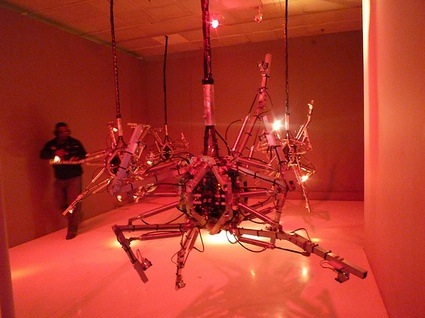 Bill Vorn, Hysterical Machines
Bill Vorn, Hysterical Machines
Unfortunately i missed the symposium which took place on July 1 to 3 but some of the videos of the presentations are available for online viewing.
This year, the biennial closed a trilogy dedicated to cybernetics. Emoção Art.ficial followed a logical sequence that started with the basics in 2006 when the exhibition and symposium were dedicated to interaction. That year, i even had the chance to interview Guilherme Kujawski, one of the organizers of the biennial. The 2008 edition of the event went a step further by exploring emergence: artworks in which the cybernetic cycle allowed the devices themselves to generate behaviors and rules that were unforeseen even by their creators.
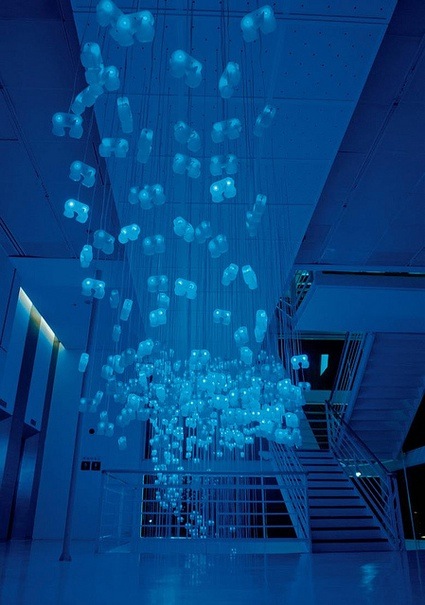 Andrew H. Fagg and Adam Brown, Bion, 2006. Photo credit Edouard Fraipont
Andrew H. Fagg and Adam Brown, Bion, 2006. Photo credit Edouard Fraipont
In 2010 the biennial was guided by the notion of cybernetic autonomy – by the evolution of principles and patterns derived from the emerging behaviors of the devices themselves. The devices not only possess the ability to enter in a dialog with their surroundings, they also determine the rules for this interaction and change their behavior as if they had “personality.”
I’ll just highlight two works which, i think, illustrate perfectly the scope of cybernetic autonomy explored by the exhibition.
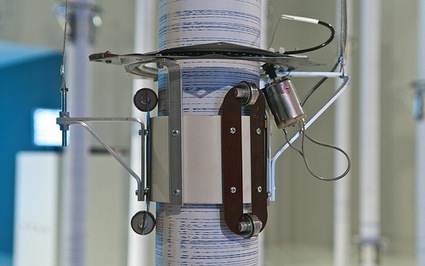 SymbioticA, Silent Barrage, 2008-2009. Photo credit Edouard Fraipont
SymbioticA, Silent Barrage, 2008-2009. Photo credit Edouard Fraipont
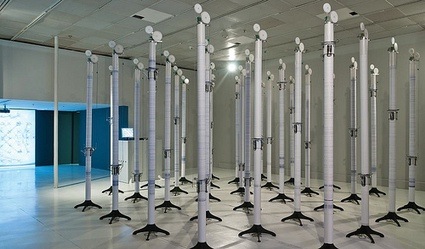 SymbioticA, Silent Barrage, 2008-2009. Photo credit Edouard Fraipont
SymbioticA, Silent Barrage, 2008-2009. Photo credit Edouard Fraipont
The images above illustrate one of the works on show, Silent Barrage by SymbioticA. This forest of little robots going up and down white columns connects the exhibition space to nerve cells cultured miles away from Sao Paulo, in the Potter Neuro-Engineering Lab at the Georgia Institute of Technology, Atlanta.
This video gives more details about the work:
Silent Barrage investigates the nature of thoughts, free will, and neural dysfunction. The work focuses at the bursts of uncontrolled activity of nerve tissue, a typical characteristic of epilepsy and cultured nerve cells. Silent Barrage uses audience movements in, and responses to the architectural space of amplified neuronal activity to feed it back to the cultured nerve cells in an attempt to silence the barrage of electrical impulses. The scientists hope that this might help them understand better how to quieten the activity in the culture dish, and this in turn would assist in treating epilepsy.
One of the pieces which amazed me the most when i visited the exhibition is a 1994 video by Karl Sims, a pioneer in the use of particle systems and artificial life in computer animation.
The video Evolved Virtual Creatures stems from a research project involving simulated Darwinian evolutions of virtual block creatures. A population of several hundred creatures is created within a supercomputer,. Each of them is tested for their ability to perform a given task, such as swimming. The most successful ones survive, and their virtual genes containing coded instructions for their growth, are copied, combined, and mutated to make offspring for a new population. The new creatures are again tested, and some may be improvements on their parents. Creatures with increasingly successful behaviors emerge through this cycle of selection.
The creatures in the video are results from independent simulations in which they were selected for swimming, rowing, walking, jumping, following, and competing with their little cuboid ‘limbs’ for the control of a green cube. The video is actually more gripping than it sounds.
Some of the works exhibited at Emoção Art.ficial [Art.ficial Emotion] include:
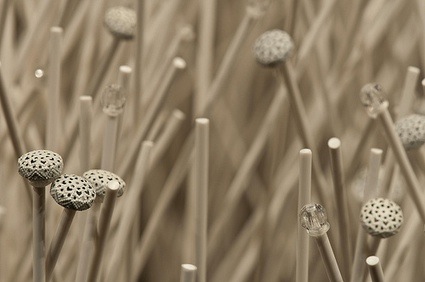 SCIArts, Metacampo, 2010. Photo credit Edouard Fraipont
SCIArts, Metacampo, 2010. Photo credit Edouard Fraipont
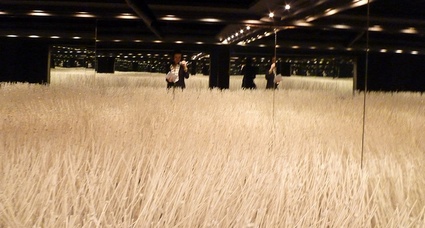 SCIArts, Metacampo, 2010
SCIArts, Metacampo, 2010
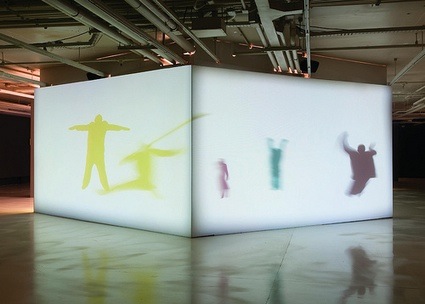 Lali Krotoszynski, Ballet Digitallique, 2010. Photo credit Edouard Fraipont
Lali Krotoszynski, Ballet Digitallique, 2010. Photo credit Edouard Fraipont
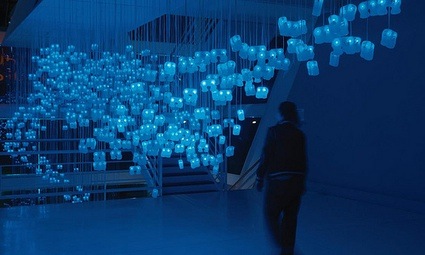 Andrew H. Fagg and Adam Brown, Bion, 2006. Photo credit Edouard Fraipont
Andrew H. Fagg and Adam Brown, Bion, 2006. Photo credit Edouard Fraipont
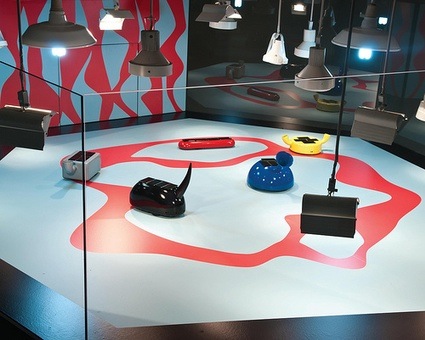 Leonel Moura, Robotarium, Sao Paulo version, 2010. Photo credit Edouard Fraipont
Leonel Moura, Robotarium, Sao Paulo version, 2010. Photo credit Edouard Fraipont
My pictures from the exhibition.
